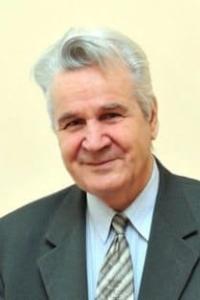Вы здесь
Legend of Kent Mountains.

Kent mountains in Karaganda region.
"The palace consisted of a large chamber, 5 sazhens wide and long, with smaller rooms attached to the right and left, and a large room at the back. Currently, only the front wall, about two and a half sazhens high, and columns four to five arshins high remain. The side walls of the building and the walls separating the large room are half-collapsed. They say that several years ago, the log roof was still intact. There was probably a garden with a small pond and irrigation ditches in front of the palace."
N. Konshin. "Memorial Book of the Semipalatinsk Region." 1901.
I know of two legends. One is a folk tale. I heard it from the forester Akish Alimov more than thirty years ago. It's a beautiful legend, but to save time, I'll recount another, earlier one, which I read in the Lenin Library in Moscow, in the Proceedings of the Russian Geographical Society, Ethnography Section, Volume XXXIV, published in St. Petersburg in 1909.
There, the legend of "Kzyl-Kench" was published, retold by L.K. Chermak, one of Russia's renowned orientalists. He wrote it down in 1898 from the words of a tall elder named Mukhametchi, a Kazakh from the Kent Mountains. Mukhametchi told the author the legend over a cup of kumys. Here's a summary:
"In those ancient times, people lived more freely and prosperously. Khan Auke had a beautiful daughter, Nezhde. Khan Kontezhe happened to be attending a funeral feast for his father at Khan Auke's. The aging khan saw the beautiful Nezhde there and lost his peace.
The funeral feast ended, Khan Kontezhe returned to his camp, met with his wives, and became even more inflamed with love for the beautiful Nezhde. Kontezhe was wealthy, owning about thirty herds of horses alone, each with a thousand head, and he'd lost count of his sheep, as well as the treasures he'd accumulated in iron chests.
Matchmakers arrived to Auka with lavish gifts for his father and bride. Auka would have happily married Kontezhe, but his Kalmyk daughter, Nezhde, proved stubborn and refused to marry the aging Kontezhe. But she couldn't resist her father. She cried and cried, and then began gathering her dowry.
According to Kalmyk custom, a bride must travel to the groom with her dowry, accompanied by forty maidens and forty horsemen. And the daughter had a rich dowry, after all, she was the khan's daughter. There were over fifty camels with their loads alone.
Khan Auke sent his two guides, one Kalmyk and one Kyrgyz. It took a long time to prepare for the journey, and the journey was long. It was very difficult. The elders warned Auke to postpone the caravan until spring, and they were right. Winter arrived early, a snowstorm raged for two days, so much snow that it buried the huddled caravan and the camels.
Then came rain, followed by another frost. Such things happen in the steppe. Moreover, the Kyrgyz and Kalmyk horsemen began to compete with each other, and the Kyrgyz began to overpower the Kalmyk. The khan's daughter was angry, but when she saw the warrior, her anger passed, and she fell in love with him.
And so the beautiful Nezhde decided to winter in the Kent Mountains. There were trees, there were stones, and there were horsemen too. No one dared disobey the khan's daughter; they quickly set to work and built a house, naming it Kzyl-Kench.
What happened next? Nezhde fell in love with a Kyrgyz warrior and became pregnant by his hand. She returned Kontezhe to Khan in the spring. Then follows a long, interesting story about the fate of the son Nezhde bore with the Kyrgyz warrior.
He proved brave, strong, and agile, but the khan did everything he could to weaken and neutralize him. Such is the legend. Perhaps this legend inspired the Kazakhfilm studio to make the film "Aisulu." Filming took place in the Kent Mountains.
This film is about the love and tragic fate of a beautiful Kazakh girl. The plot goes something like this: a powerful, wealthy bey decided to marry the beautiful orphan Aisulu. Aisulu loved another and decided to run away with him. The fugitives were captured. Aisulu's beloved was torn to pieces by the bay's dogs.
She was forced to marry him. And after a while, she ran away from him with a brave young man. It was winter. The fugitives froze to death on the way."
Authority:
Novikov Vladimir Yakovlevich. http://novikovv.ru/o-karkaralinske/gori-kent-kray-legend
Photos
Alexander Petrov.







